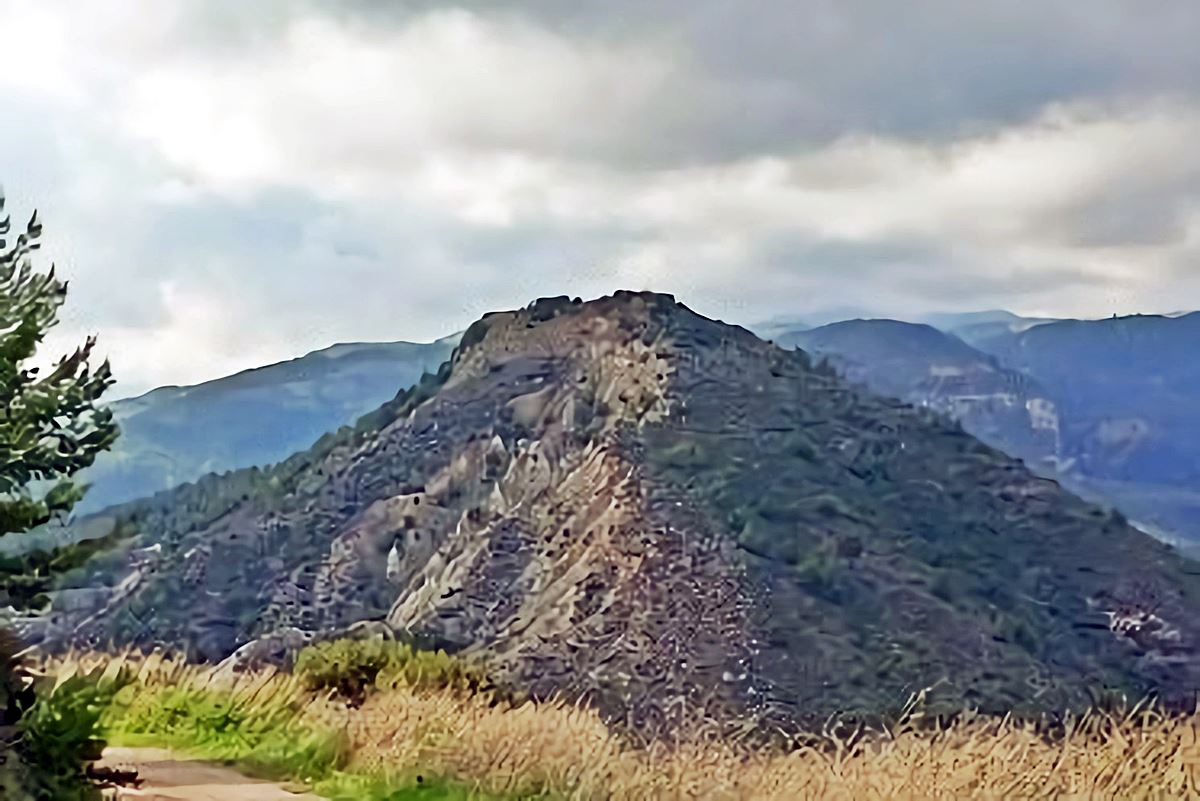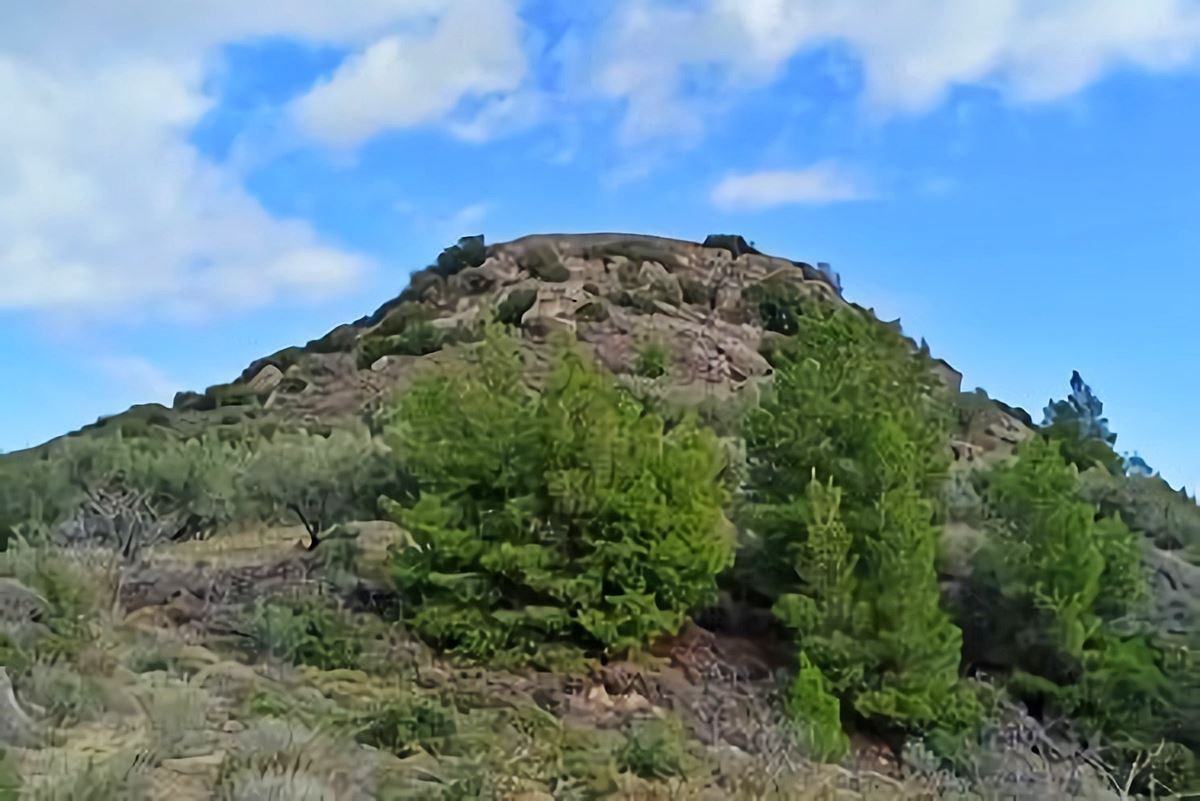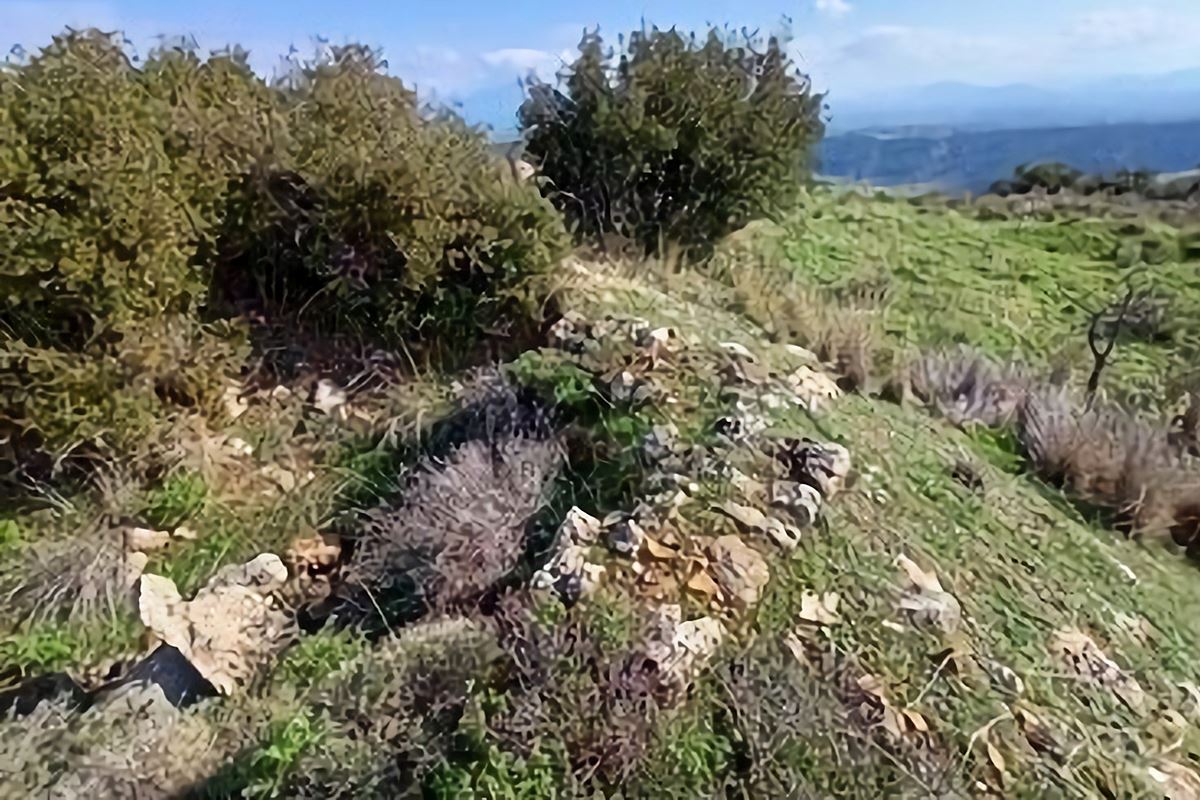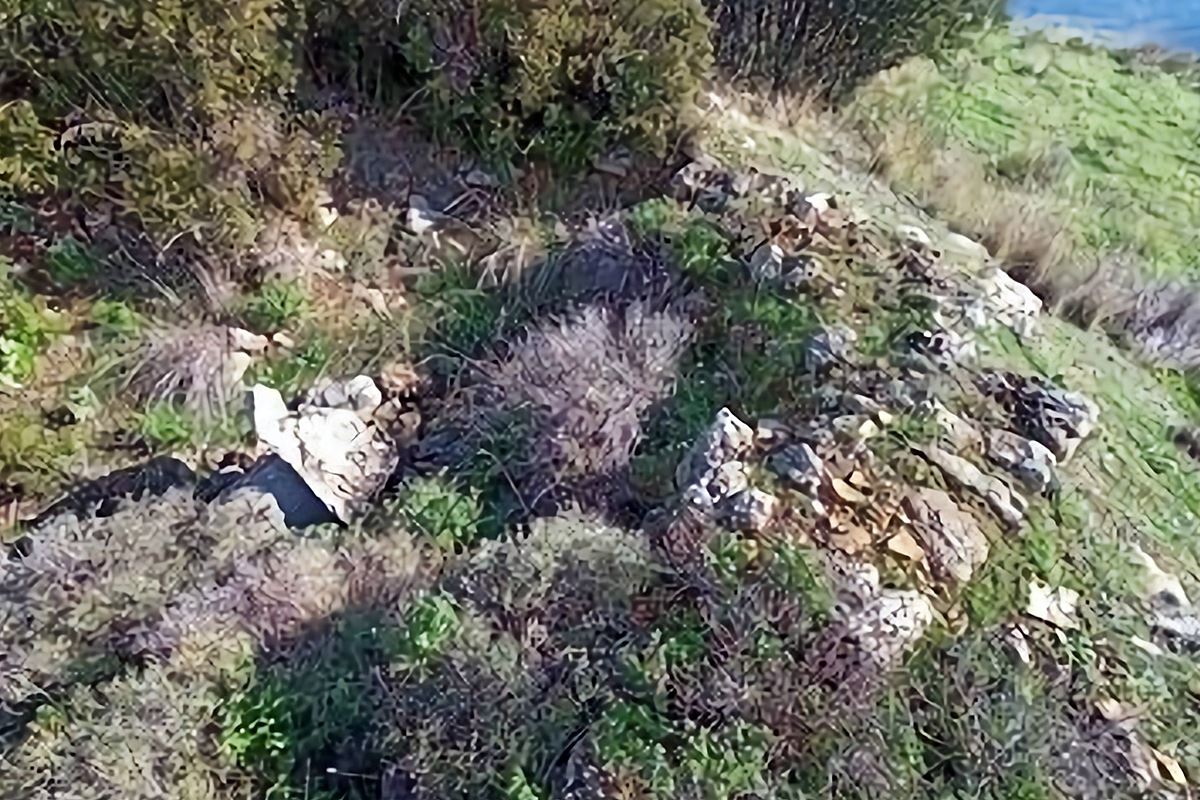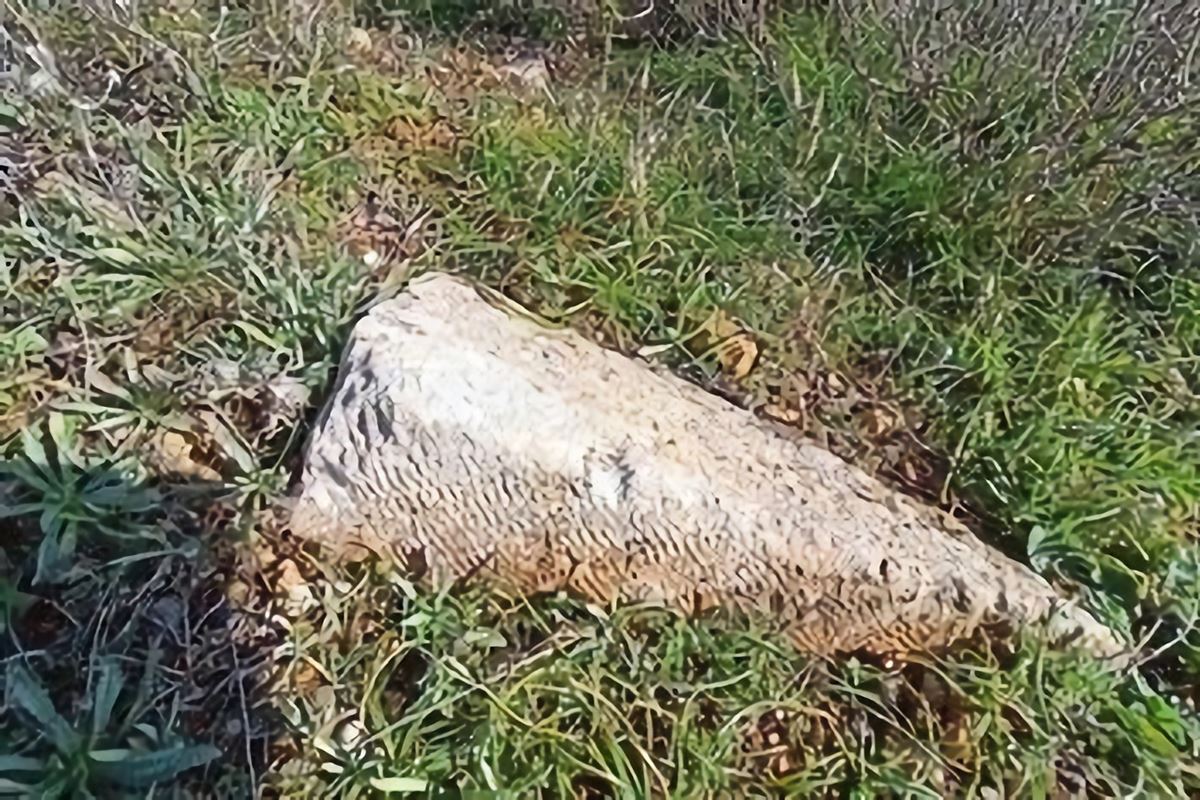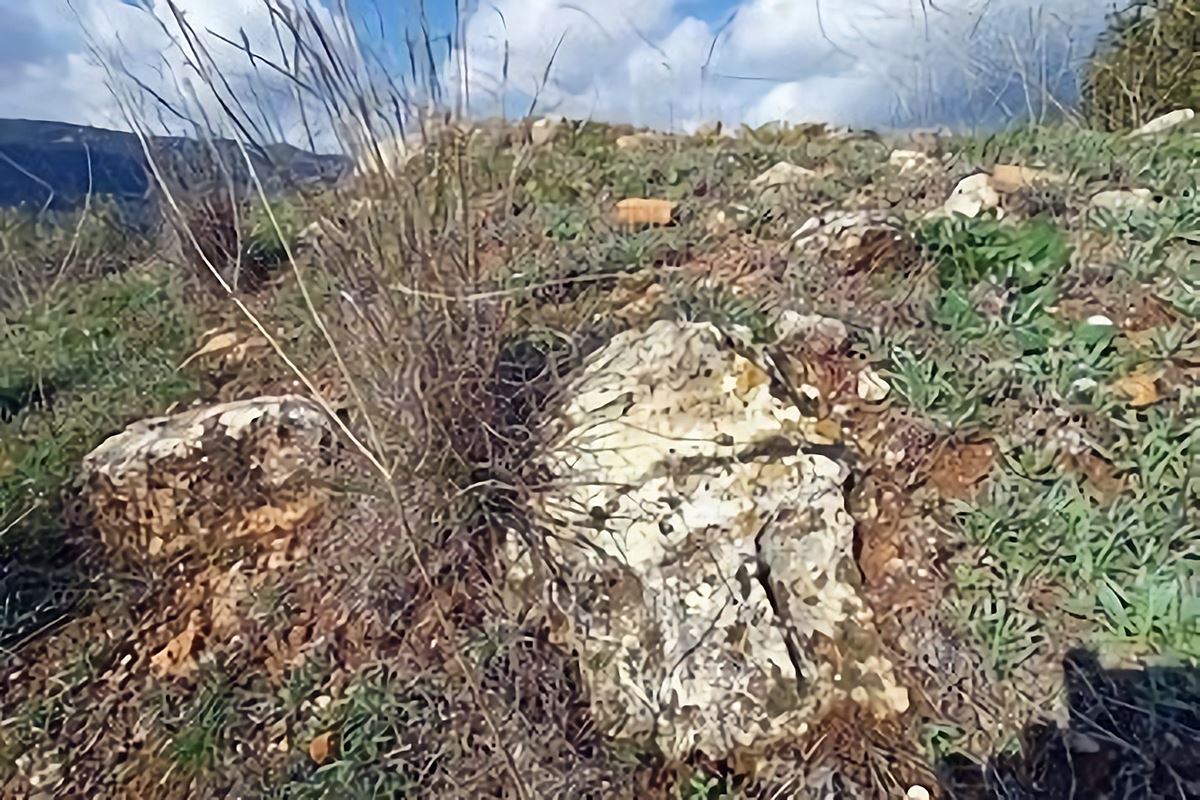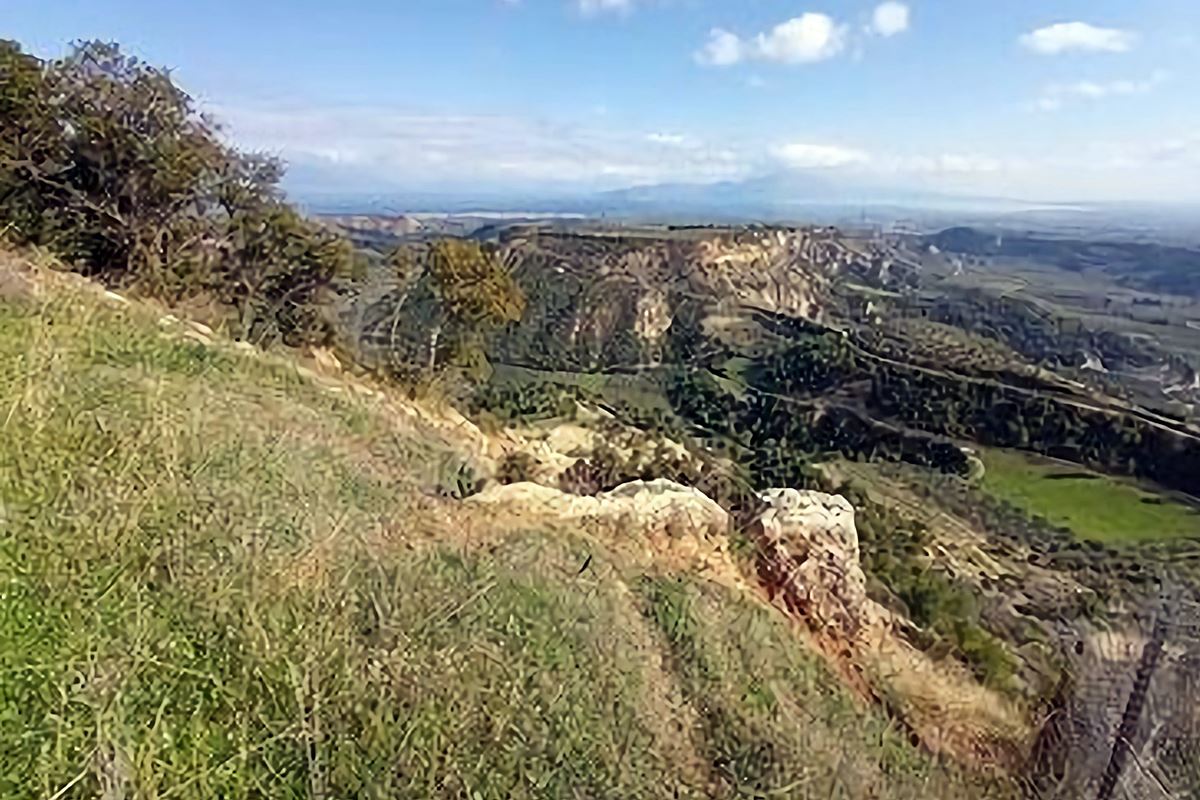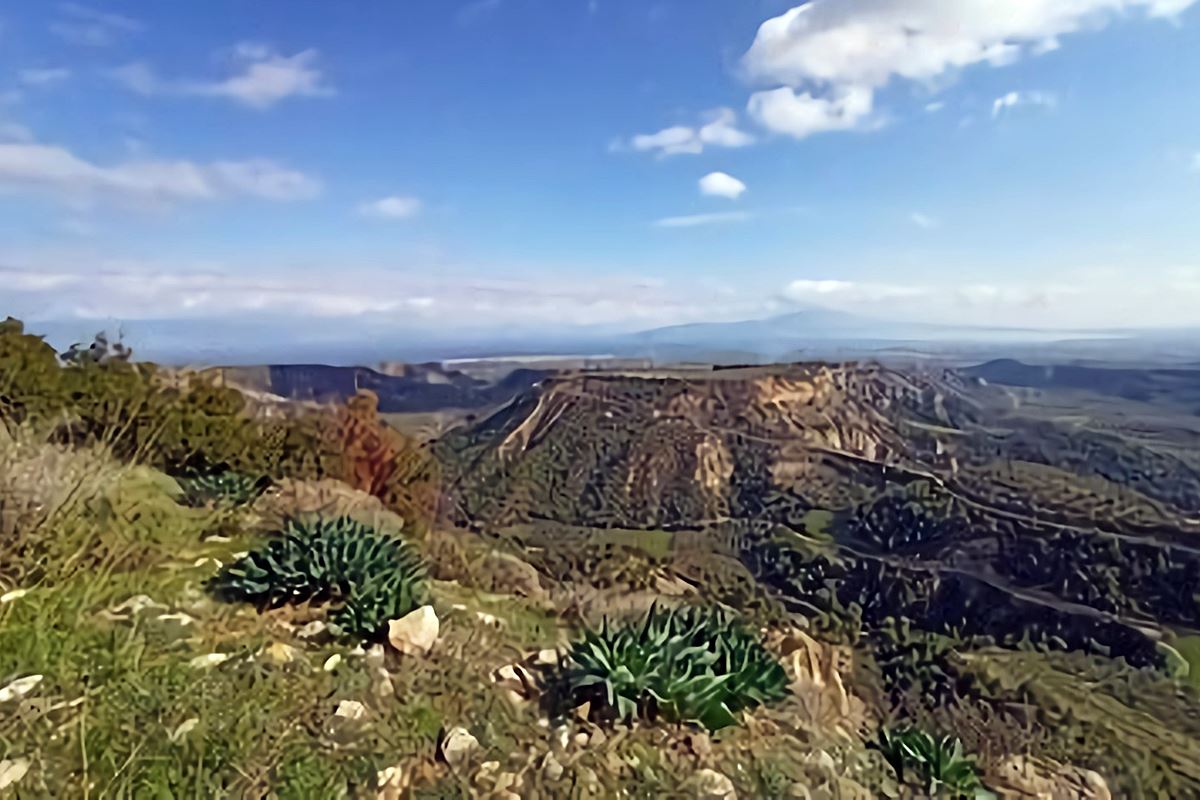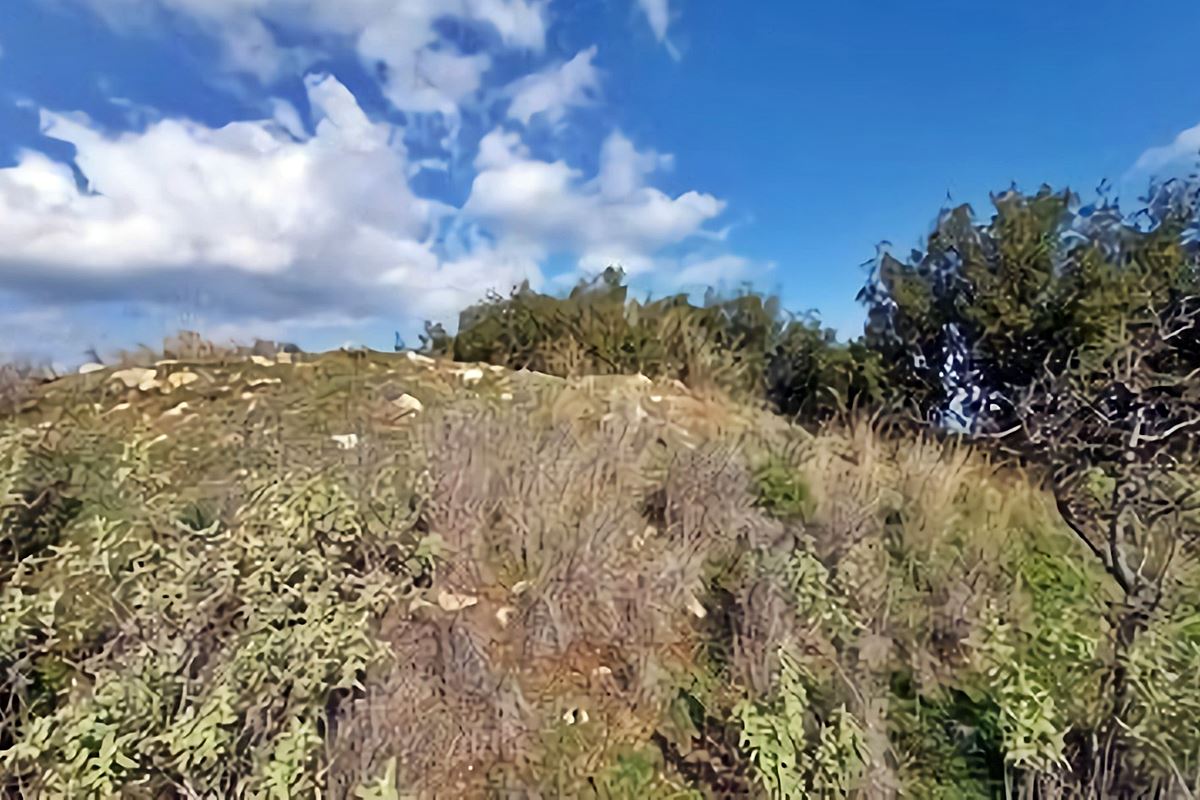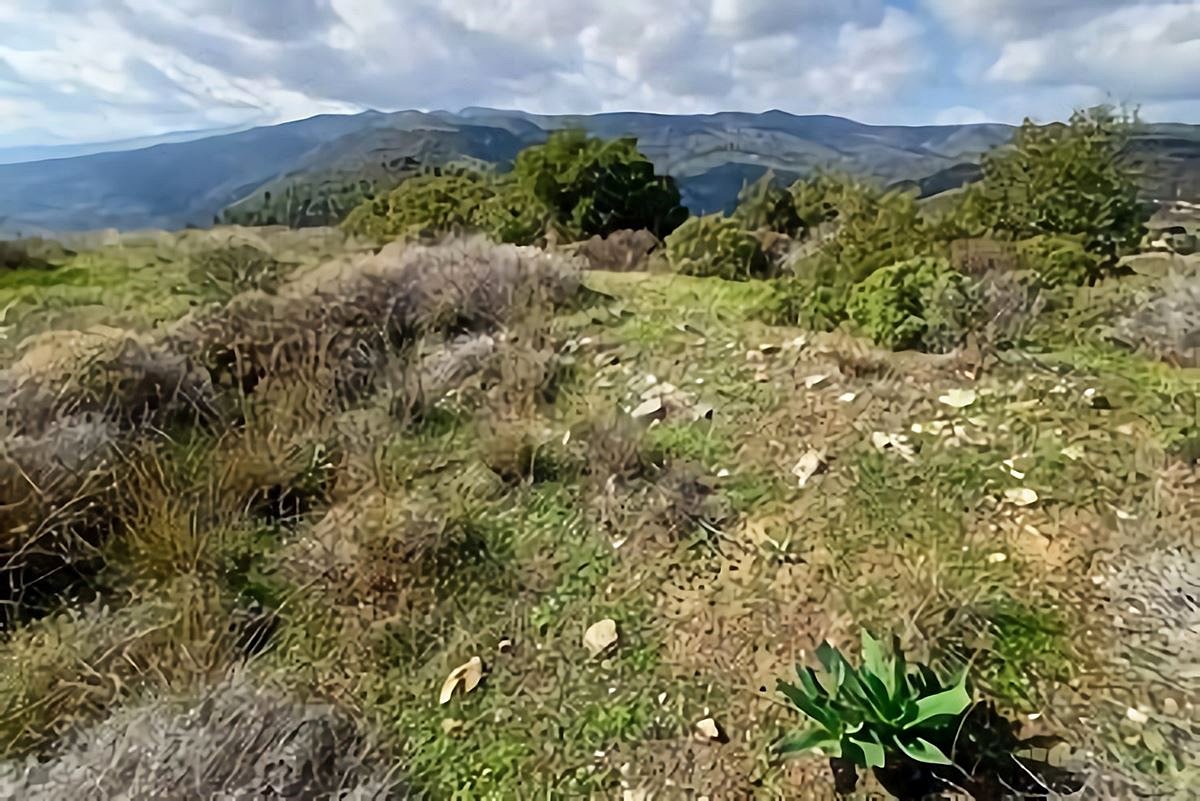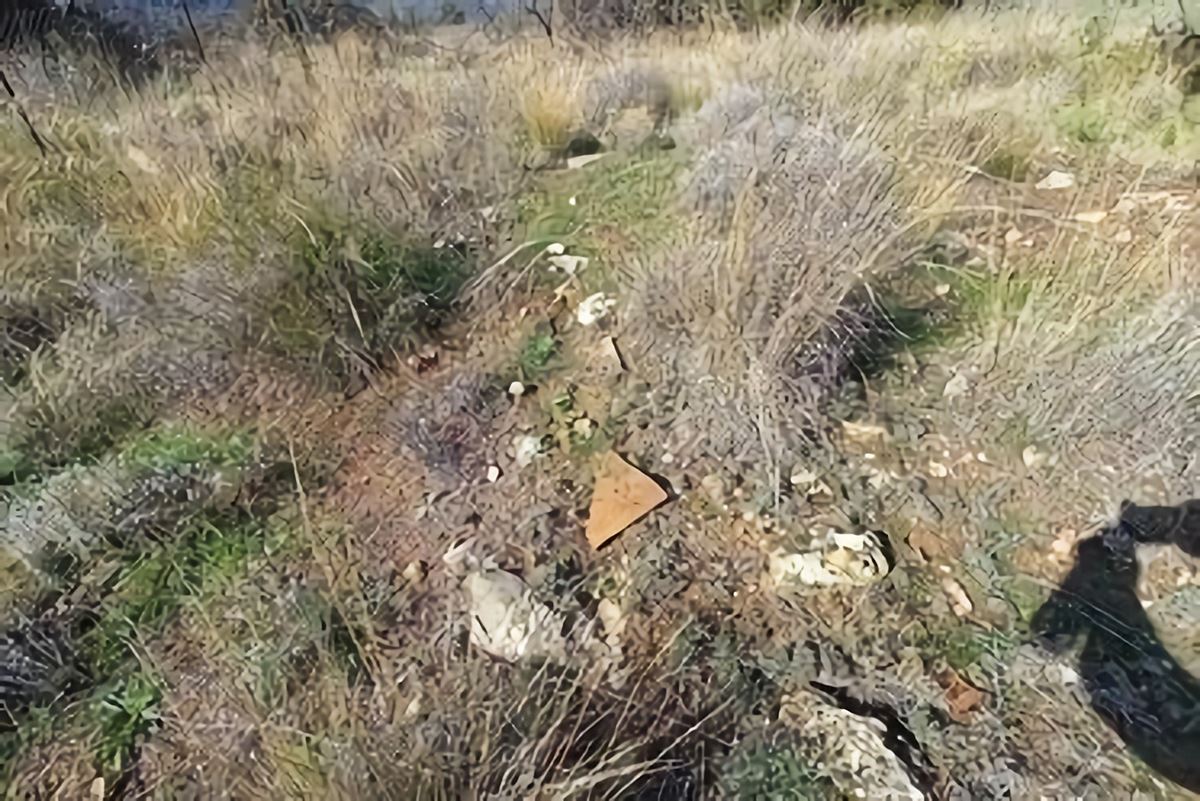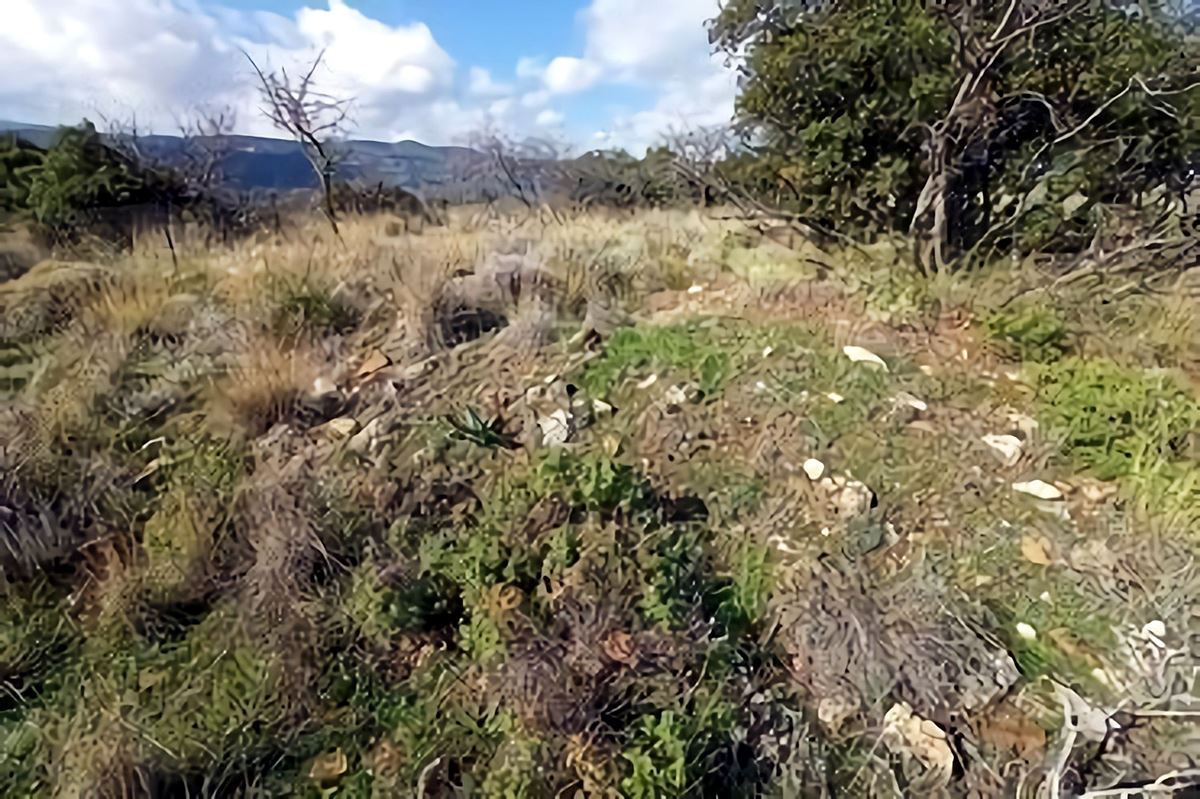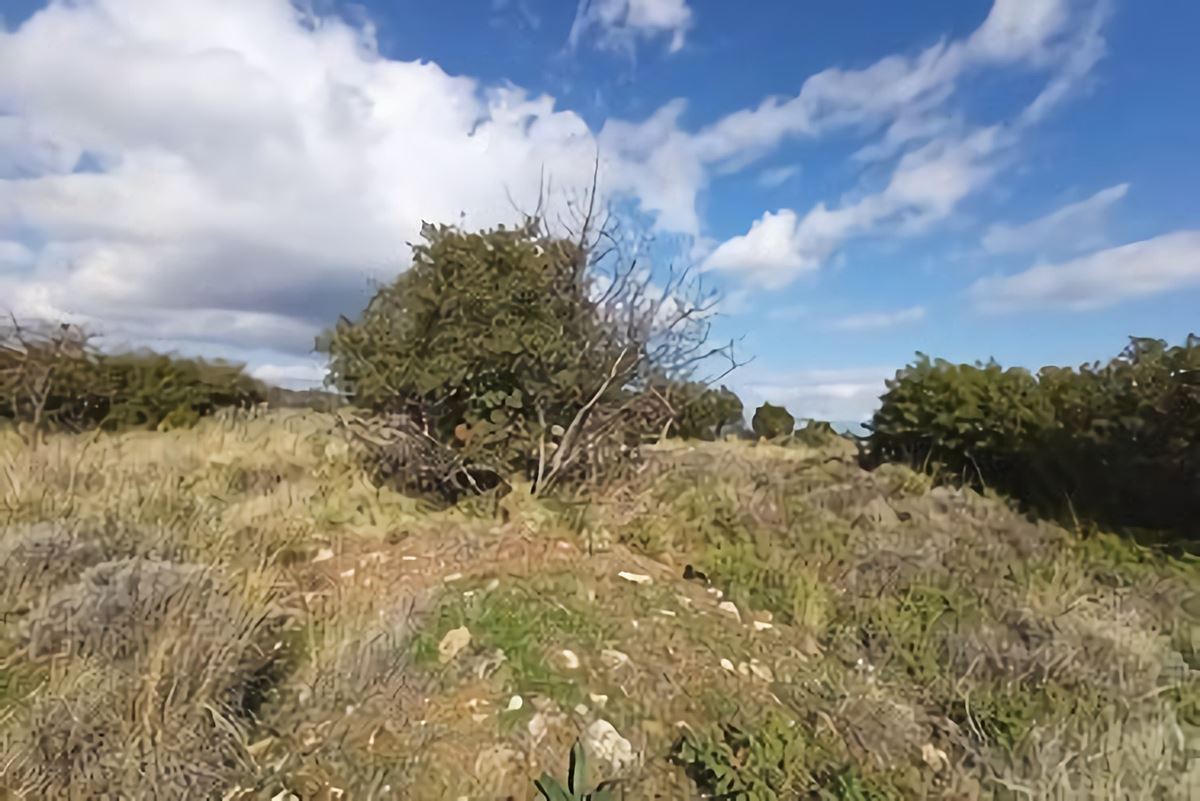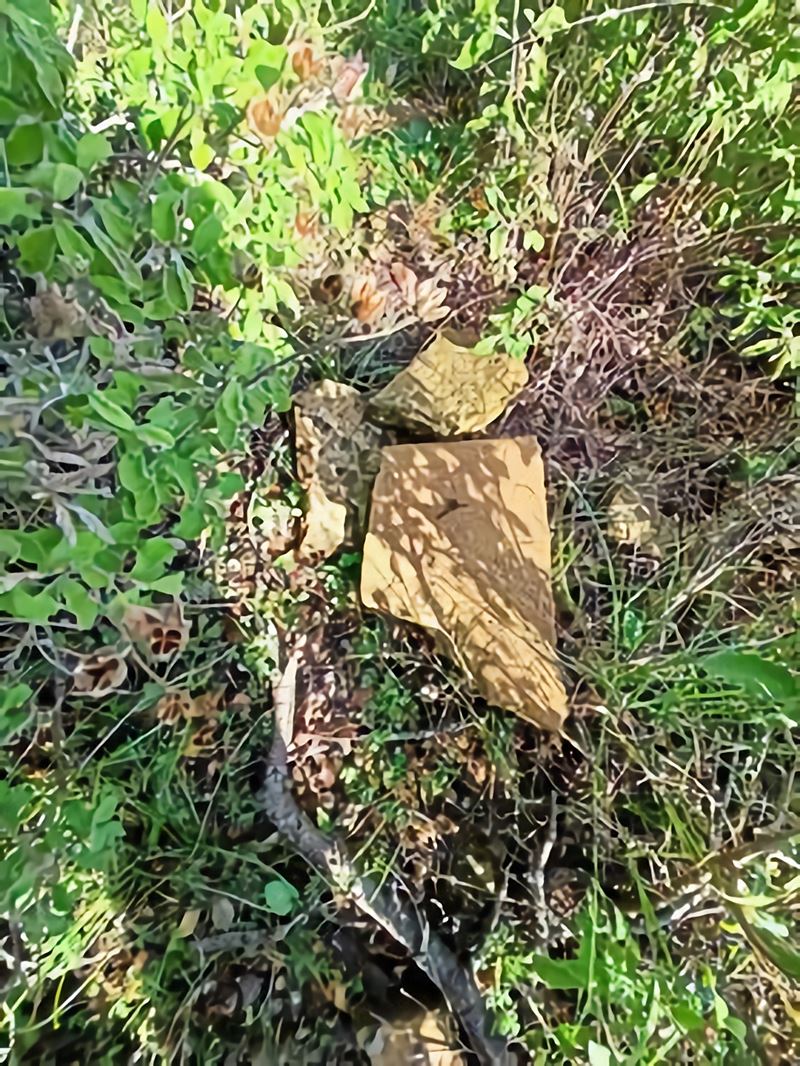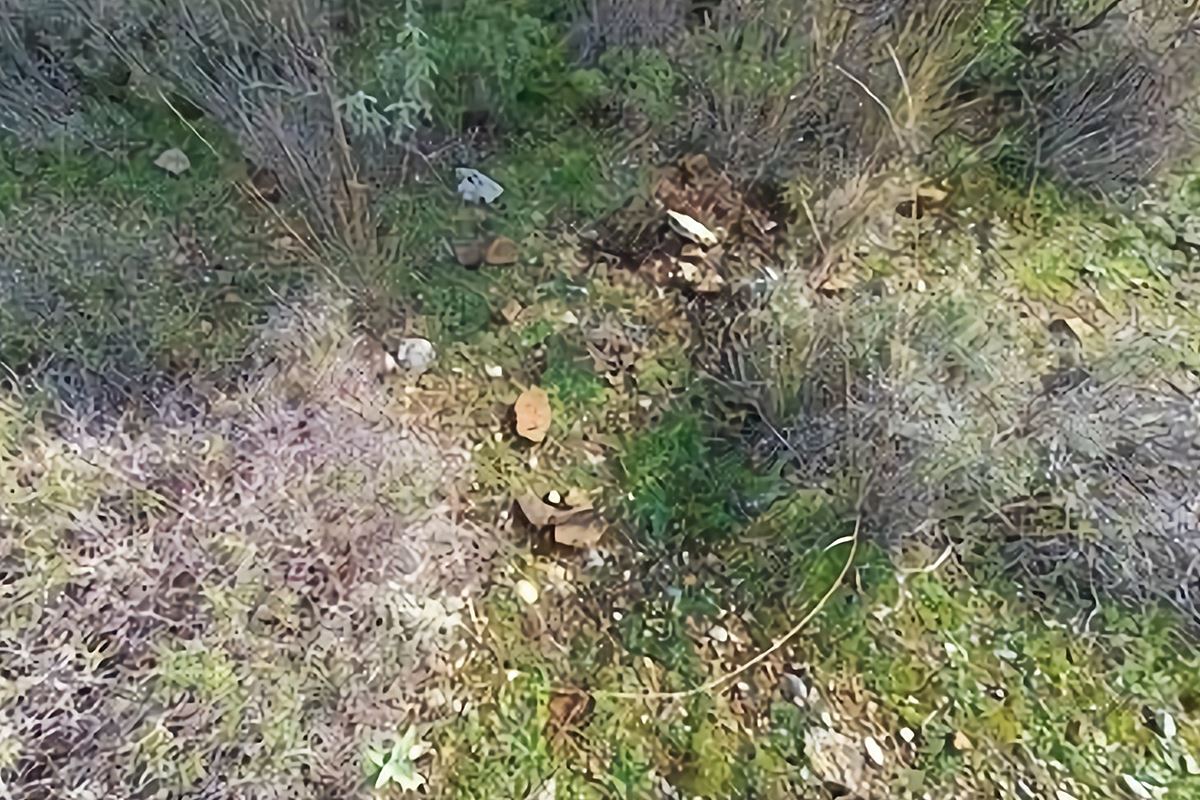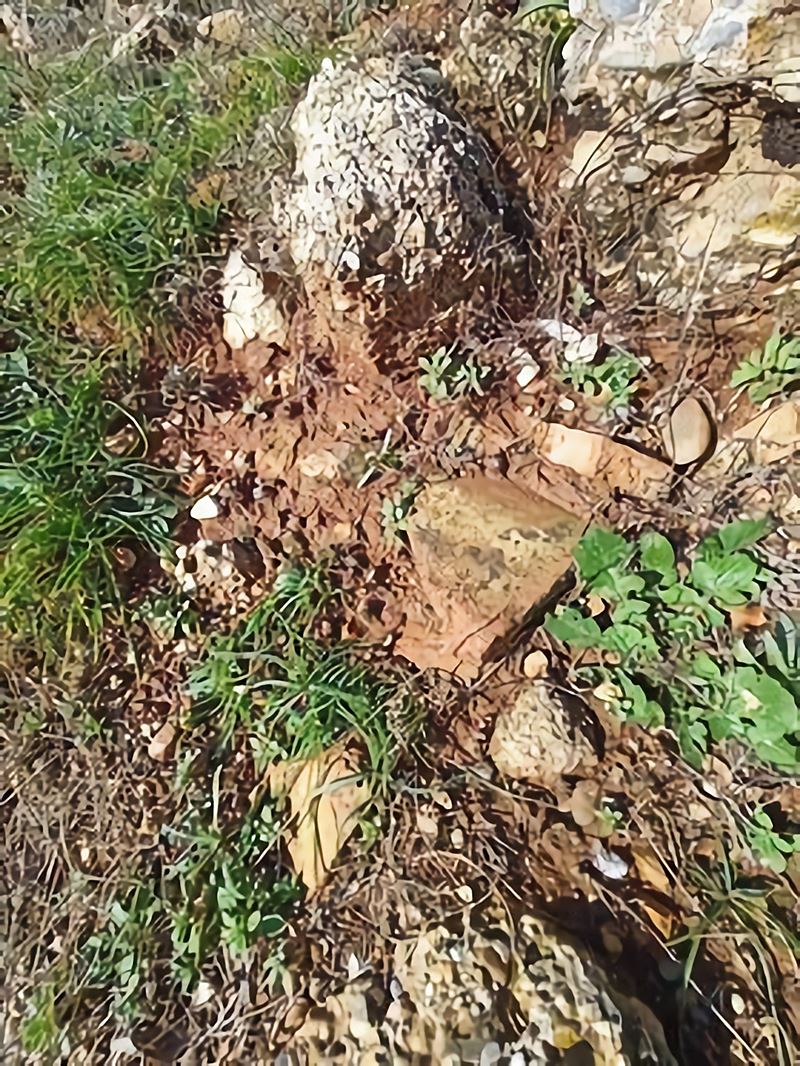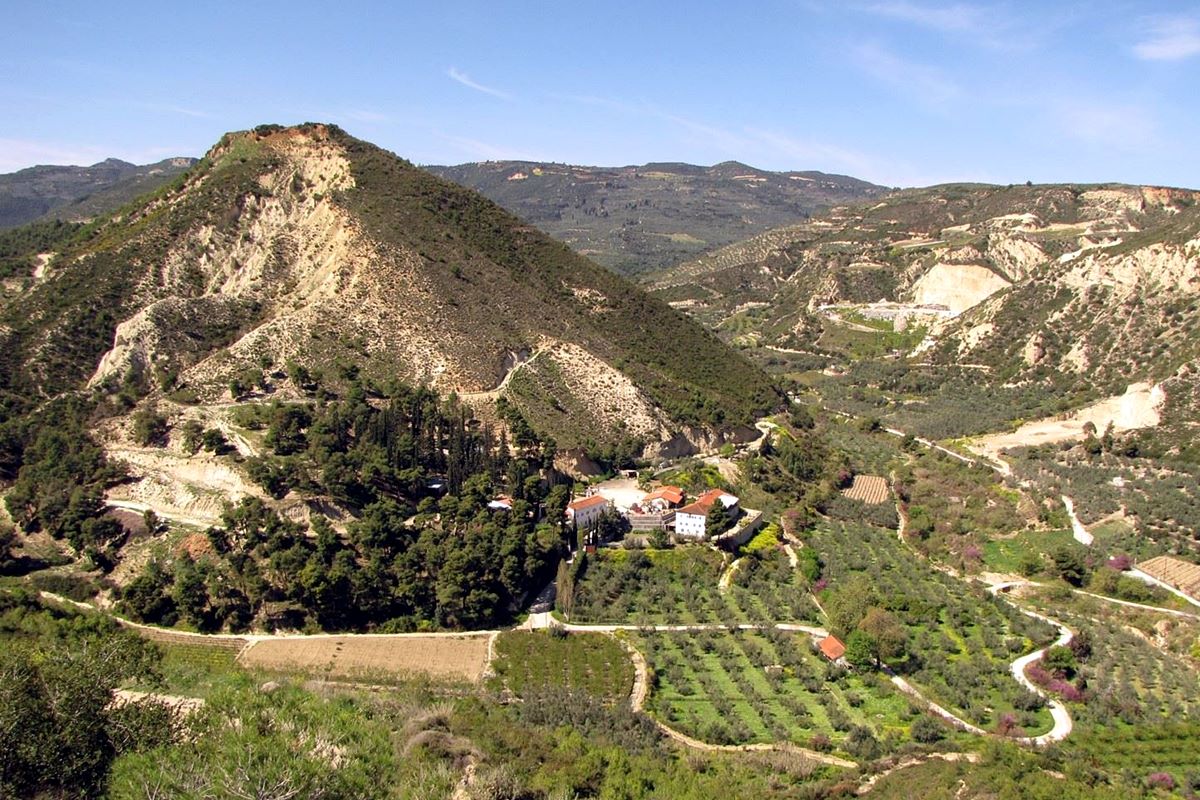Sikyon, Sikyon, Corinthia,Peloponnese
Xerocastelli of Basilika
| Location: |
| At the top of a conical hill 2km SW of the acropolis of ancient Sikyon |
| Region > Prefecture: | 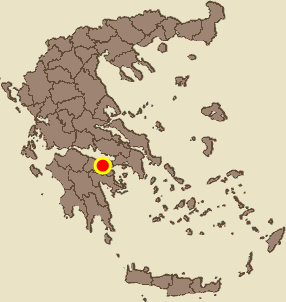 |
| Peloponnese Corinthia | |
| Municipality > Town: | |
| City of Sikyon • Sikyon | |
| Altitude: | |
|
Elevation ≈ 790 m (Relative Height≈300 m) |
| Time of Construction | Origin | |
| 14th cent. | FRANKISH |
|
| Castle Type | Condition | |
| Castle Ruins |
Few Remains
|
Few remains of a Frankish castle on the plateau of the top of a steep conical hill 2.5 km west-southwest of Sikyona (which until 1920 was named "Basilica" and in the Middle Ages "Basiliko" or "Basilicata").
Despite the relatively large area of the plateau, Xerokastelli does not seem to have ever been a settlement. It was probably a military fortress and lookout point and perhaps occasionally served as a refuge of the population.
History
The castle has been identified with the Xerokastelli of Bassilika which is mentioned as a fiefdom of Niccolò Acciaiuoli in documents from 1365 (Jean LONGNON et Peter TOPPING, Documents sur le régime des terres dans la principauté de Morée au XIVe siècle, p.182, “Nel tereno del Signore a Sorcastella e a la Torre”). According to this evidence, Nicholo had estates around Sorcastella to the west of Sicyon.
Obviously the castle was built before 1365. The Florentine banker Niccolò Acciaiuoli had been bailiff of the Principality of Achaea in the period 1340-1341 and later senesalo (chief courtier-marshal) of the kingdom of Naples. He was a confidant of Catherine II of Valois-Courtenais, widow of Philip I of Taranto, who was titular Latin empress of Constantinople and who had bought in 1333 the rights to the throne of Achaia from John of Gravina, thanks to financial assistance of Acciaiuoli.
Niccolò Acciaiuoli came to the Peloponnese in 1338 together with Catherine and, as mentioned above, in the period 1440-1441 he was the bailiff of the Principality. When he returned to Naples in 1441, he had spent 40,000 gold coins in the Morea on investments in land, strengthening the fortifications and various other works in the Principality.
Much later, in 1358, Prince Robert of Taranto (son of Catherine of Valois) granted the Castellania of Corinth to Niccolò Acciaiuoli as a reward for his services to the Principality of Achaea and the Kingdom of Naples (but also because the region needed a strong leadership to protect it from external threats, mainly from Turkish corsairs). Castellania included 8 castles together with Acrocorinthos, and apparently with the Basilicata castles, and developed into another semi-independent Frankish state in Greece.
There is an opinion that Xerocastelli is the Xerocastelli mentioned as Sorcastelli and as the property of the “Senesalo” in the list of fiefs of 1377. The same fortress is also found in the list of 1450 (Sero castrelle), of 1457 (Sero Castelia) and of 1469 (Sero castellia). But the Xerokastelli of these lists has been identified, almost certainly, with the castle at Kazarma in Argolid, which was also one of the castles of the Castellania of Corinth.
Structure, Fortification & Buildings
The elongated plateau of the top of the hill has an area of approximately 5,000 sq.m. It is surrounded by a wall on the edge of the cliff with a perimeter of about 300 meters.
We don't have a good idea of the wall as it is barely preserved. It seems that due to the natural protection provided by the steep slopes, there was no regular defensive wall on all sides, while in some places where a trace of it can be seen it gives the impression of a retaining wall due to the fragility of the ground.
On the north side, which was also the most vulnerable, the remains of a 5✖5m square tower are preserved. at foundation level (photo 3,4).
| First entry in Kastrologos: | February 2023 |
Sources
- Research, info and photos bt Aris Tax, January 2023
- Πέππας Ιωάννης, «Μεσαιωνικές σελίδες της Κορινθίας και Μορέως», Αθήνα, 1990, σσ. 166 – 168
- Μιχαήλ Σ. Κορδώσης, «Συμβολή στην ιστορία και τοπογραφία της περιοχής Κορίνθου στους μέσους χρόνους», Αθήνα 1981,σελ. 200 σημ. 217. 247
- Website Parakato.gr - ΤΟ ΒΑΣΙΛΙΚΟ (ΑΡΧΑΙΑ ΣΙΚΥΩΝΑ) ΚΑΤΑ ΤΟΥΣ ΜΕΣΑΙΩΝΙΚΟΥΣ ΧΡΟΝΟΥΣ, article by Γεώργιος Λόης, March 2019
|
|
| Access |
|---|
| Entrance: |
| Free access. |



